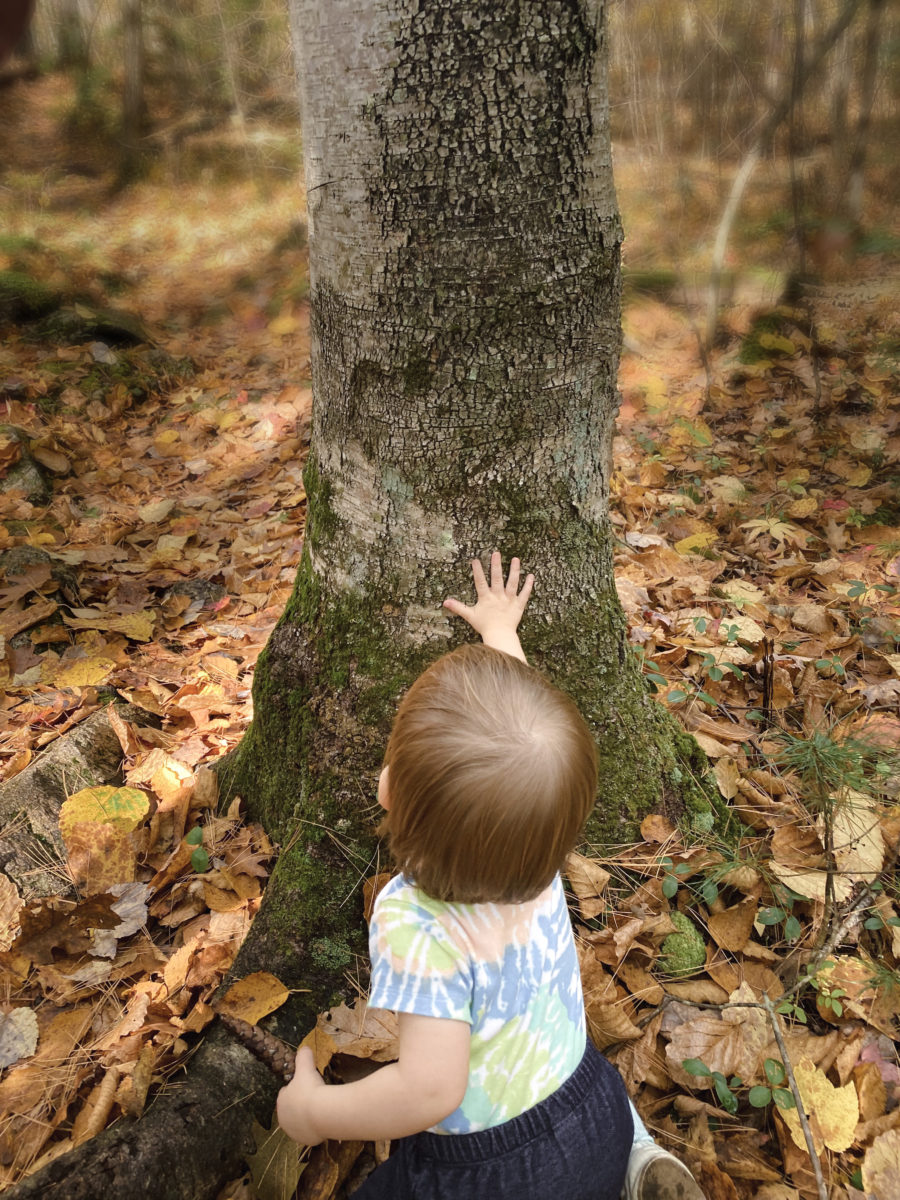It’s 11:07 a.m. on a Wednesday morning at the office. I am still adjusting to life as an interior designer even after several years in the industry. The hum of overlapping conversations and ringing phones buzzes across a crowded expanse of cubicles. Midway through catching up on emails from the day before, I realize I’m running late to a presentation. I jolt away from my desk and quickly glance out the window into a treeless parking lot before sneaking into the back of a darkened conference room.
The presenter begins by asking all of us in the room to close our eyes and imagine being transported to anywhere in the world: Where would we choose to go? Anywhere but here, I can almost telepathically sense the other designers sighing behind closed eyes. After a moment, we take turns sharing responses: sitting on a beach, hiking in the mountains, walking through a garden. The presenter patiently listens to each answer and finally makes a simple yet profound observation: All the interior designers in the room described an outdoor place.
Over the years, I’ve conducted this same experiment with friends, family, and colleagues. The consensus remains: We all want to spend more time outside. Why is this? Since that morning in the conference room, I’ve considered this question regularly and pivoted my career into landscape architecture along the way. There are countless theories and studies on the topic of our subconscious desire for more nature in our daily lives. During graduate school, I discovered an encouraging clue in the seminal works of Roger Ulrich (1983) and psychologists Rachel and Stephen Kaplan (Kaplan, 1995; Kaplan & Kaplan, 1989). These researchers revealed that observing and interacting with nature provides stress reduction and restoration from mental fatigue.
Stress reduction and restoration occur in nature when our environment offers opportunities for what the Kaplans called soft fascination, or involuntary attention. Examples of this include a gentle breeze, daylight, or birdsong. These sensory opportunities provide relief from the demands of everyday hard fascination, such as those we encounter when using electronic devices and when in offices, retail stores, and classrooms.
Have you ever noticed how desirable the window seat is on a bus or in a restaurant? Daylight and views of nature are an essential ingredient for im- proved mood and overall well-being, and have even been attributed to improved outcomes in health- care settings (Ulrich et al., 1991). Landscapes offer the positive distraction and sensational experiences that our everyday constructed environments lack—a realization that has been clear to me ever since my first job in that busy office.
While stress recovery from interacting and observing nature is achievable for people of all ages and abilities, school-age children experience developmental benefits from spending time outside in a variety of ways. For children, spending time in nature is largely associated with play. Nature play occurs in outdoor places set in natural environments with close proximity to vegetation, water, and wildlife. Examples of this include public parks, conservation land, campgrounds, and at home in the yard. Nature play benefits children by providing a physically, socially, and emotionally engaging experience that offers opportunities for individual or collective discovery of themselves and the world around them, as illustrated in the following example:
Early spring is on the horizon in New England. Purple crocuses peek through thin patches of melting snow dotted with animal tracks. The air is cool, yet humid enough to allow one to forage the snowy flowers with bare hands. In a few weeks, the forsythia will explode with golden blooms, their heavy limbs arching to form hideaways among the thicket. By June, the monarchs will return as clusters of soft pink flowers hang delicately on native milkweed sprinkled along roadsides and meadows. Weaving through oaks, maples, and aspen trees in the summer forest, life is chirping, humming, rustling, swaying, and dancing in the canopy above the rocky terrain. The fresh air and layers of green foliage are invigorating, and the anticipation of swimming through piles of autumn leaves months from now means there will be much to look forward to ahead.
Sensory-rich environments create an escape from daily life and stimulate imagination, curiosity, and exploration. Children can manipulate raw materials such as sticks, grass, twigs, and stones to build play settings, use as props in sociodramatic play, or collaborate to execute a project together. Caring for insects and wildlife evokes empathy for all living creatures as children hone their observation skills and focus on seeking out hidden treasures. Navigation requires close attention, mental map-building, and risk-taking as children climb boulders, balance on logs, and traverse challenging terrain. Children with attention deficit, sensory integration, and autism spectrum disorders are hypersensitive to noise, light, and visual disarray. Varying degrees of openness and enclosure in the landscape allow children to exercise choice and preference as they learn to self-regulate in proximity to nature.
Nature play settings are place-specific and direct attention outward to the surrounding landscape.

Traditional playgrounds differ from nature play settings in a variety of ways. Play activities are age-specific and heavily dependent on the equipment, focusing attention inward toward a collection of monkey bars, platforms, slides, and swings. Unlike nature play, traditional playgrounds do not always provide opportunities for constructive play, which is associated with creativity and problem-solving skills. Materials are often synthetic, bear no relationship to their surroundings, and can be installed cookie-cutter-style anywhere in the country. Nature play settings are place-specific and direct attention outward to the surrounding landscape.
Eventually, children outgrow traditional play equipment. Luckily, there is no age limit to enjoying nature. Evidence suggests that children who play outdoors in nature are more likely to exhibit environmentally responsible behaviors later in life and develop an appreciation for nature that promotes greater inquiry, awareness, and stewardship (Beery & Jørgensen, 2018; Wight et al., 2016). Children also build trust with adults in nature settings when they feel included in multi-generational spaces and activities. Like adults, pre-teens and teenagers are more likely to experience an overall reduction in stress with regular access to and views of nature. Nature settings provide quiet, contemplative places for reading or reflecting; active settings for walking, running, and hiking; or adventurous spaces that allow for activities such as climbing and swimming with friends—experiences that can continuously be built upon throughout life.
In conventional school settings, nature play is often difficult to incorporate. It’s common for adults today to recall the traditional play “yards” of our childhood as harsh fields of asphalt with the only evidence of nature seen squeezing through the cracks in the pavement. Unfortunately, many school landscapes still look like this, most notably in urban and socioeconomically disadvantaged communities. The absence of trees exposes children to harmful heat and poor air quality while play activities are limited to court sports and conventional play equipment.
Around the country, landscape architects are helping schoolyards transition toward a more inspired type of play experience: the nature playscape, which is specifically designed to connect children with elements of nature play while fitting into the school setting. Rural, suburban, and urban schools can all find ways to integrate nature play features, as documented at Eagle Rock Elementary School in Los Angeles (Campus Water Connections, 2021). The play experience is integrated into the surrounding context and is often shaped around existing trees and topography, allowing each play space to feel unique. Play structures are composed of natural materials, such as logs, stumps, boulders, and earthworks. Incorporating water features provides an opportunity for children to learn about hydrological systems while helping keep kids cool on hot days. Boulders provide places to sit and climb while logs are used for swing structures and obstacle courses. The composition of play features is designed to be open-ended, inviting interpretation and self-motivated free play, in comparison with the defined activities of traditional play equipment.
Nature playscapes are often accompanied by open lawns, perennial plants, and trees. The open spaces allow for games, running, and flexible event programming while perimeter trees provide shady re- lief. For some schools, maintenance staff fear the added green space and vegetation will increase the demand for upkeep. While it is true that plants do need care, another of the core benefits of nature play is learning to respect the environment and become stewards of the land. Students and educators can work together to weed, plant, and water while learning about photosynthesis and the water cycle. Gardening is widely celebrated as a therapeutic activity, in addition to being educational (Marcus & Sachs, 2013).
Balancing safety and accessibility for children of all abilities is an important consideration when designing a nature playscape. Some degree of risk allows children to test their physical limits, make judgments, feel accomplished, or even learn to fail. Integrating accessible surface materials and play features that are easy to approach from varying heights and angles allows for a universal play experience for all.
Where can educators begin if they are interested in incorporating nature play into their school outdoor programming? The Natural Wildlife Federation, Green Schoolyards America, Children & Nature Network, and the Natural Learning Initiative are several helpful available resources. These organizations further illustrate the benefits of nature play, emphasize the need for outdoor learning, and provide guidance on the design and implementation process showcased in successful projects of all shapes, sizes, scales, and budgets.
Landscape architects are equipped to facilitate the initial stages of planning, study the proposed site, and make design recommendations that support a project’s goals. Community workshops and one-on-one sessions with school administrators, educators, and students inspire a collaborative process that invites different degrees of engagement. Participation is an opportunity to share ideas, express needs, and listen to others.
It’s Wednesday again, but this time I’m not in an office. It’s March and I am a few weeks away from graduating with a master’s degree in landscape architecture. I walk into a classroom of third and fourth grade students, all of whom are excited to participate in a design workshop for a new nature playscape. The desks are pushed together to form a ring around a table in the center, where students point to recognizable features on a map of their campus and share what they like and dislike about their current playground. I learn that the best spot to build a tiny fairy house is tucked among the roots of the hemlock tree. Meanwhile, students along the perimeter place stickers on their favorite images of nature playscapes. We discuss in small groups before coming together to summarize an inventive array of ideas for the new design: More places to build fairy houses, trees, climbing obstacles, hills, balancing logs, and swings are just a few of the requests. The bell rings, and we all make our way outside.
See article references here.

Allyson Fairweather
Allyson Fairweather is a designer trained in both landscapes and interior environments. After working as an interior designer in the greater Boston area for several years, Allyson left for the hills and farms of the Pioneer Valley in western Massachusetts to pursue a master’s in landscape archi- tecture at the University of Massachusetts Amherst. She currently practices as a landscape designer at Wright Ostermier Landscape Architects, a certified Women’s Business Enterprise, serving clients across New England.
